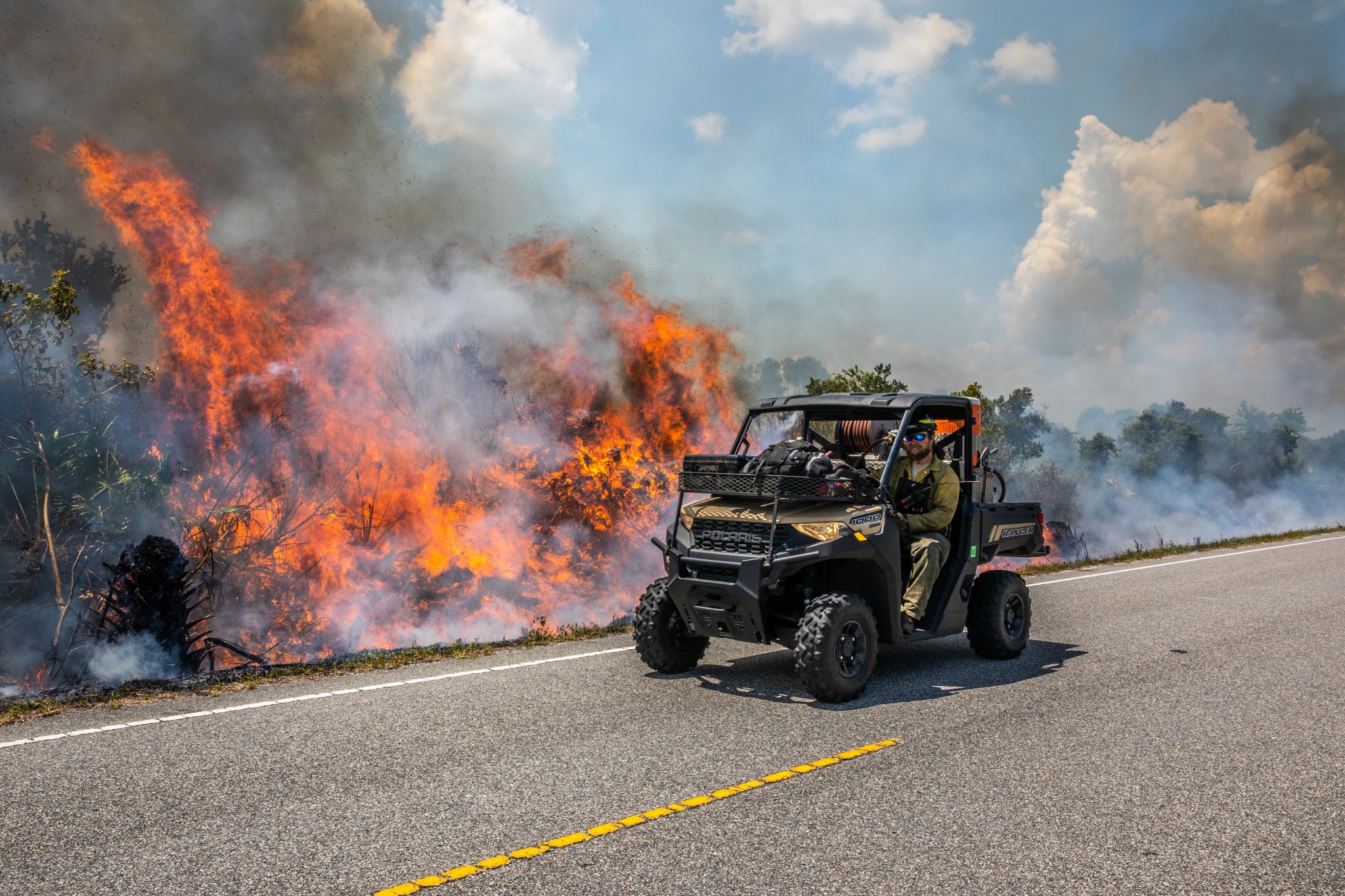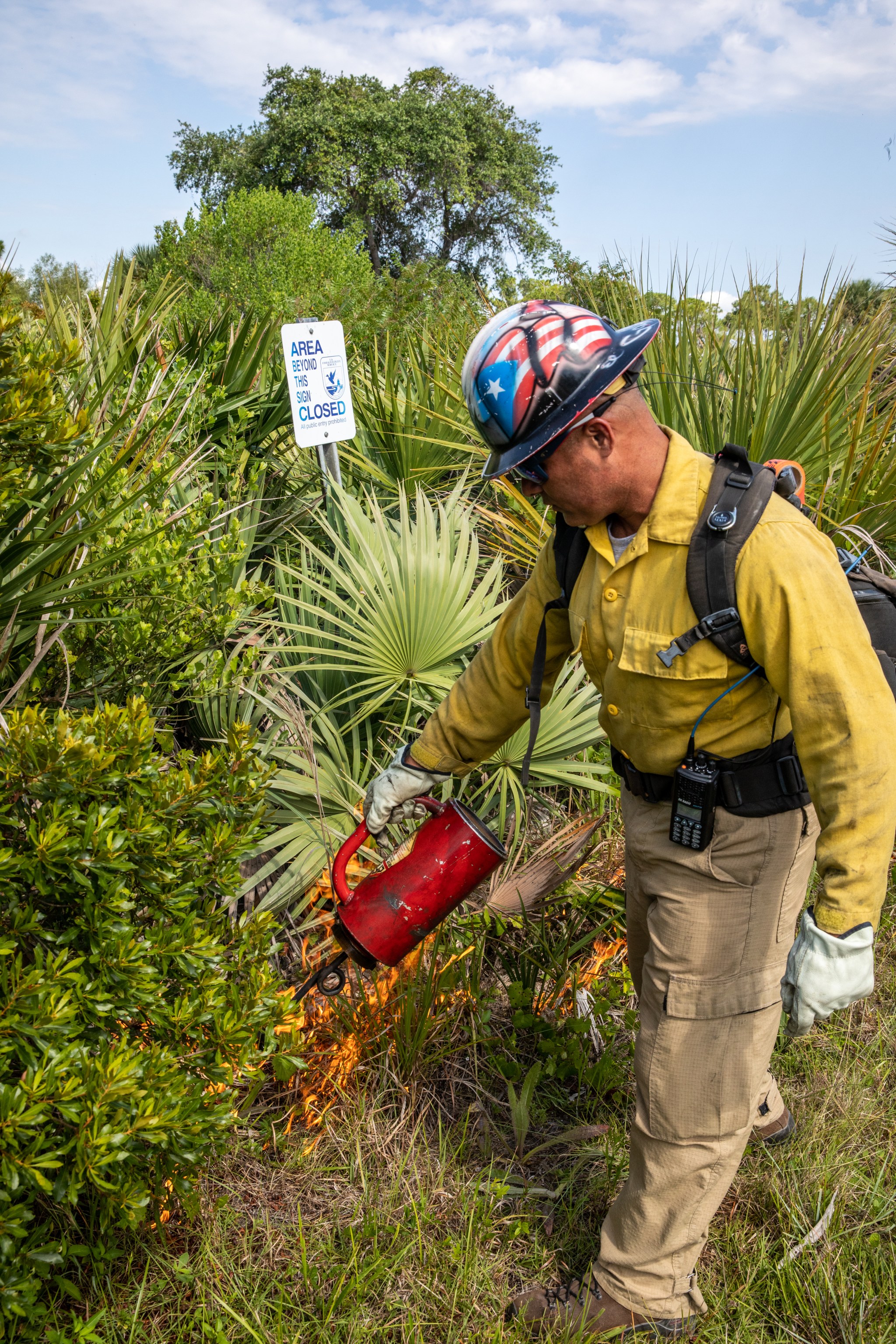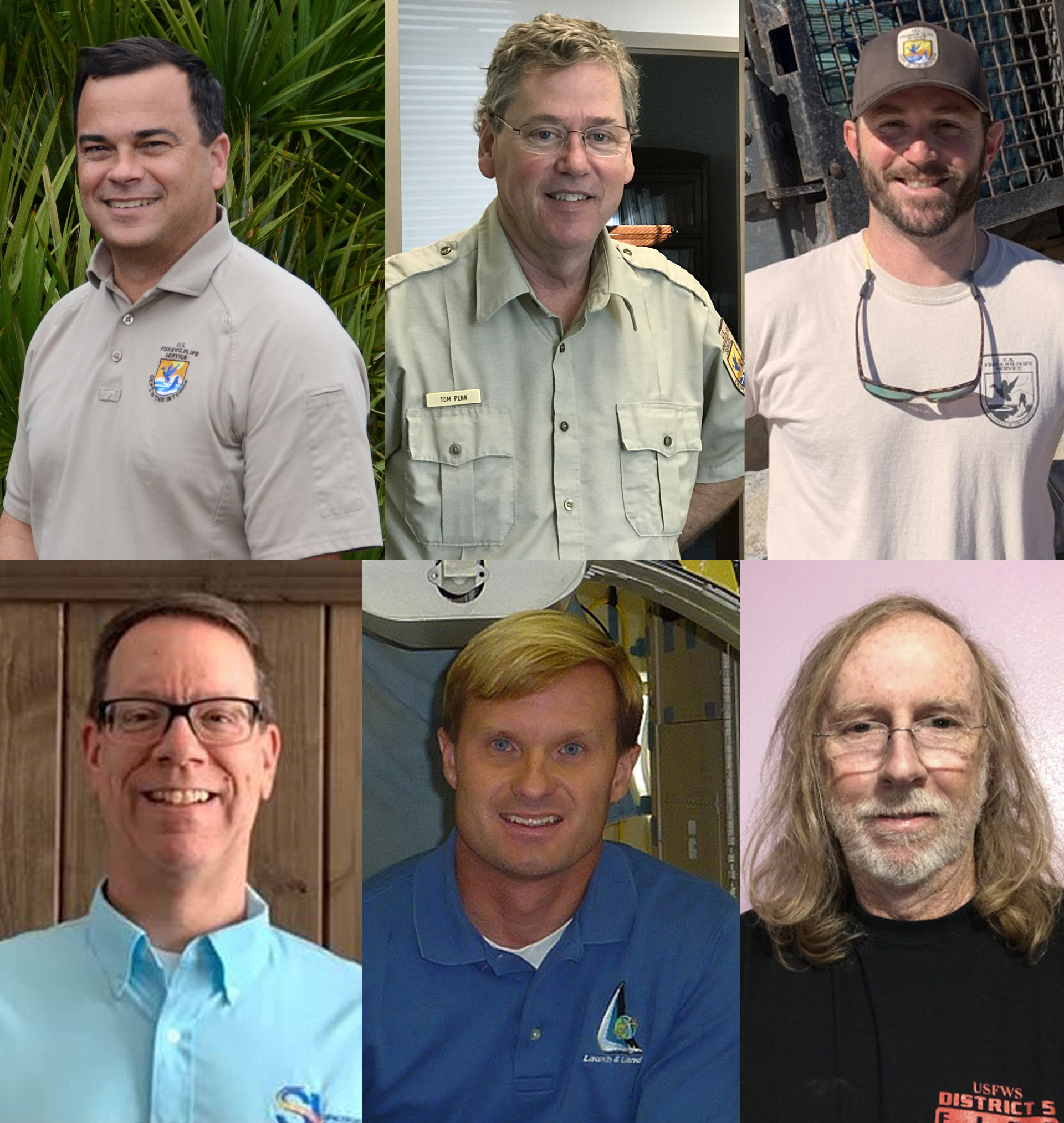By Laura Aguiar
Kennedy Space Center
NASA’s Kennedy Space Center resides in “Lightning Alley,” a region of Central Florida that leads the nation in lightning strikes. Lightning sparks 10 to 15 wildfires annually on Kennedy property, so land managers must prevent uncontrolled fires that could damage spaceport infrastructure.
That’s why ecologists and firefighters from multiple organizations come together to protect the spaceport’s technological and natural resources. Using the method of prescribed burns, these officials hope to fight fire with fire.
The center’s 140,000 acres includes the Merritt Island National Wildlife Refuge (MINWR), a diverse habitat for more than 1,500 species of plants and animals. Many Kennedy facilities are located near what fire officials call “hazardous fuels” – not rocket fuel, but overgrown brush. Prescribed burns help manage these fuels, protecting the center’s buildings, flight hardware, and launch pads – as well as its diverse wildlife – from the threat of wildfire.
“A burn prescription considers smoke sensitive areas, weather conditions likely to affect the burn – such as wind and humidity – the amount of brush to be burned, and how it is likely to burn, among other things,” said Sam Ashbaugh, a wildlife biologist at U.S. Fish and Wildlife Service (FWS).
Florida FWS officials target about 15,000 acres for prescribed burns each year. The MINWR fire management plan addresses ecological objectives and the conditions and limitations for scheduling burns. The plan maps acreage into units for mosaic burns – burns that create a mosaic of patches to represent different fire histories.
“If we withheld fire completely, trees would get very dense, and the landscape would no longer be suitable for the protected species that NASA is required to look after,” said Tim Kozusko, a biologist with Herndon Solutions Group at Kennedy. “Without fire, the habitat becomes less suitable for the species that live at the refuge.”
Wildlife near the burn areas – such as the endangered scrub jay or indigo snakes – typically know what to do when fire is near and usually just get out of the way. “Gopher tortoises, depending on the intensity of the fire, will go down into their burrow and come out into the landscape the next day,” said FWS Supervisory Wildlife Biologist Mike Legare. “Or they may stay in their burrow for weeks until some green vegetation grows around them.”
Kennedy’s busy launch cadence can make it tricky to schedule a burn around center activities. Officials rely on the spaceport’s Geospatial Spaceport Integrated Master Schedule (GeoSIMS), which depicts hazardous operations, road and bridge closures, construction, contamination control areas associated with critical, sensitive flight hardware processing, and prescribed burn operations.
“GeoSIMS is a visualization of the Kennedy Spaceport Integrated Master Schedule, or SIMS, overlaid on the Kennedy Space Center Geographic Information System, or GIS map,” said Kennedy’s Spaceport Operations Integration Manager Greg Gaddis. “Mission partners are able to share where their critical, sensitive hardware processing is taking place and for how long.”
The Spaceport Integration office also helps fire officials communicate the burn plan to the rest of the programs and partners at Kennedy, along with a required three-day notice. This close coordination allows officials and partners to enact additional safety measures swiftly, such as closing nearby roads to avoid potential traffic hazards when smoke from a prescribed burn may create low visibility for drivers.
On the morning of the burn, the burn boss holds a pre-fire briefing to discuss the objectives, expected weather, results of smoke models, overall firing plan, and any special concerns. Crew assignments are made and, when ready, crews deploy to assigned locations. A test fire helps ensure fire behavior is within expectations.
“If there is not enough wind, the fire won’t burn,” Kozusko said. “If there is too much wind, it will burn too aggressively.”
The FWS administrator gives a final go, no-go for the burn. “I have a five-page checklist to review with the burn boss line by line,” said FWS Wildlife Refuge Manager Tom Penn. Teams monitor wind speed, direction, and relative humidity throughout the duration of the prescribed fire.
A tri-agency memorandum of understanding among Kennedy, the Fish and Wildlife Service, and Cape Canaveral Space Force Station helps keep the organizations on the same page when it comes to planning and executing prescribed burns. “We use that agreement and the restrictions in that agreement to protect people, property, and operations,” said Bill Heidtman, of Kennedy’s Spaceport Integration.
The agreement earned recognition in environmental management circles as an example of successful interagency cooperation. But more importantly, the combined efforts have helped get the lightning fires around the spaceport under control.
“We’ve reduced fuel loads at Kennedy over the past 10 years,” Penn said. “We used to see fires with larger flame height, hotter burns, smoking longer. We don’t see those anymore with this burn plan.”





























